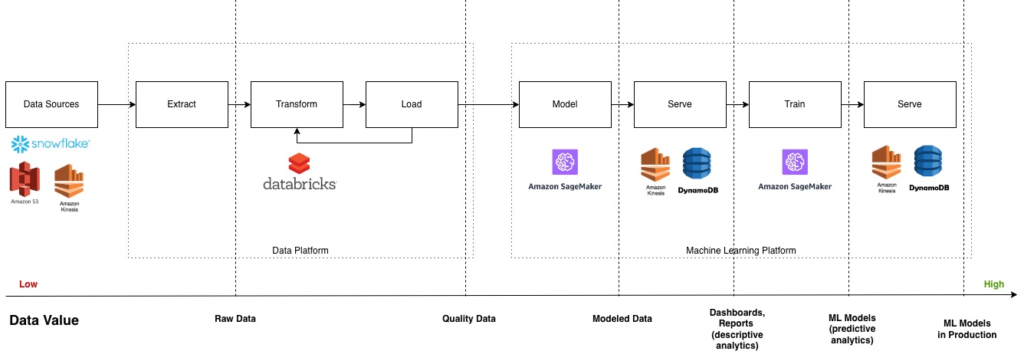 Back to all cases
Back to all casesSetronica collaborated with a dominant force in the Lifestyle > Fashion and Apparel sector, securing a spot among the top 100 industry players in the US. In an arena teeming with prominent brands like Shop Gap, Macy’s, SHEIN USA, Nike, Nordstrom, and Everlane, our client stands out as a fierce competitor.
At the heart of our client’s operations lies flash sales and e-commerce, where they wield a platform that beckons a staggering monthly user base of 4 million. What sets them apart is their distinct focus on exclusivity and strategic sales events, carving a unique niche in the cutthroat landscape of the industry.

We collaborate closely with a dedicated client-side data science team comprising six skilled individuals. Leveraging our specialized expertise, we assisted this data science team in crafting a dynamic real-time recommendation service. This innovative service enables two key capabilities:
In a remarkable display of expertise, our team orchestrated a comprehensive four-phase AWS fine-tuning initiative. The outcome was truly extraordinary: operational expenses plummeted from several thousand dollars per month to an astonishingly minimal $80, marking a reduction of over 30 times.
The service is fed by real-time data collected from websites and mobile applications.
Data events are processed through a pipeline of AWS Lambda functions and passed to the AWS Sagemaker real-time inference endpoint. The pipeline creates a rolling window for each website/application user to collect a batch of events used for inference. Inference results are stored in the DynamoDB table, and consumers can retrieve them through the API gateway. Health monitors, alerts, and dashboards have been created to simplify service support.
Our customer uses an ML model that is not supported by Sagemaker, so a custom Docker image was created to meet Sagemaker API requirements.
This implementation was created as an alternative to a solution based on an Apache Spark structured streaming POC project offered by the customer. The Lambdas-based implementation was accepted because it reduced the cost of the service from several thousand dollars to only $80 per month.
The service is fed by real-time data collected from websites and mobile applications.
Data events are processed through a pipeline of AWS Lambda functions with DynamoDB as the persistent data store. The DynamoDB CDC data stream was used for low-cost data processing. Rolling window function was used for data aggregation. Variable time width was implemented for the function to account for significant differences in day/night user activity. Results are available to consumers via API implemented using AWS API Gateway and Lambda function.
Self-hosted Airflow has been migrated to the AWS MWAA service. DAGs code was migrated from the old Airflow to the latest version supported by MWAA.
Massive code refactoring was performed to make the code follow the best practices recommended by Airflow. This refactoring significantly reduced the load on the Airflow database and improved the stability of the MWAA service.
The data science team uses Spark jobs on the Databricks platform to perform model training and inference. These jobs represent a significant portion of the team’s budget.
Some of the most expensive jobs were optimized to reduce their cost. By splitting the jobs into parallel tasks, the cluster resources were used more efficiently and costs were reduced by 30%. Another example — the data processing graph was restructured and the cost was reduced by 3 times.
The Data Value Chain Model encapsulates data’s journey from raw material to actionable insights. It encompasses stages like collection, processing, analysis, and interpretation, yielding valuable outcomes. This case study exemplified this model in transforming services and optimizing processes, highlighting our dedication to extracting optimal value from data for business success.

